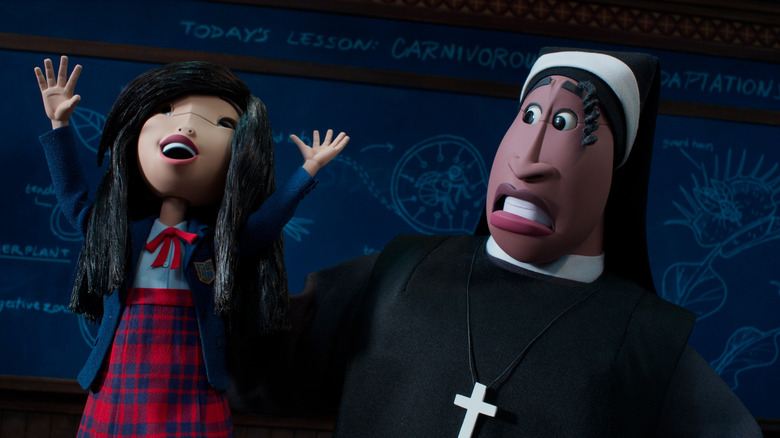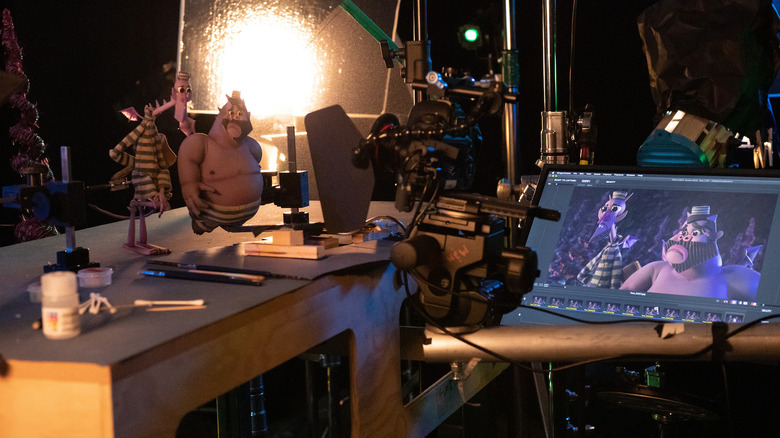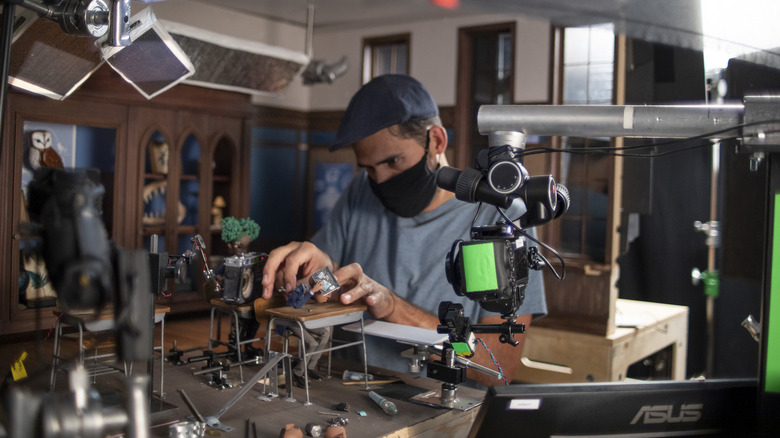The Wendell And Wild Crew Had To Pull Off A 'Puppet Rescue' To Save Their Movie From A Fire [Set Visit]
Director Henry Selick is the first to admit that making stop-motion animated movies is not easy. "Making movies this way, it's insane. Let's admit it," the director told us during a visit to the set of his new movie, "Wendell and Wild" in April 2022. "[Making] movies a frame at a time ... But at the heart of it, for me, it's the most magical way to make a film."
But the already difficult process of making a movie by moving detailed puppets fractions of an inch was made more difficult because of ... Well, you know. The past few years in general. Pick something. Shortly after Netflix signed on to make the movie (itself already a risk in a world where CG animation is the default), the pandemic arrived, halting production and throwing the entire movie into jeopardy. And then, after production resumed with new safety protocols, a freak weather occurrence sent Portland, Oregon (where the film was being made) into chaos. A literal forest fire threatened the set of the film, and by extension, the film's cast of puppet characters.
So, what's a crew of stop-motion animators to do? Organize a literal puppet rescue operation, of course.
First, the pandemic
Before we get to the terrifying heat wave and the accompanying fires, there's the pandemic. By design, stop-motion animation requires crews to work in close proximity, indoors, all day, hovering over puppets and sets and generally sharing the same air. There's literally not a worse place for keeping a potentially deadly virus at bay.
Production shut down, and Selick was convinced disaster was imminent. His movie was surely dead. "Oh man, they're going to stop the movie now," he remembers thinking. "Netflix is going to stop the movie. How can they possibly keep supporting [us]?" But the movie stayed alive, and Netflix even kept the paychecks coming:
"They always supported us. When we had to shut the studio down for covid, initially, before we learned to live with it, they paid everybody, even if they couldn't work from home."
Certain members of the crew recalled fabricating puppets and sets from their home offices, keeping the production moving forward even as they were social distancing. Others simply had to sit tight. "They were willing to not lose the crew," Selick says, noting that it added well over a year to the filming schedule and led to budget overages. But knowing a studio stuck by its crew during a period when the film industry was hovering over a gaping abyss is a sign of a disaster well-handled.
Then, the puppet rescue
On top of that already difficult stop-motion production process and the newly installed pandemic regulations to keep the crew safe, "Wendell and Wild" has to endure the heat dome. June 2021 saw record-shattering heat hit the Pacific Northwest, with temperatures eventually reaching 116 degrees. "The [Portland] streetcar, the plastic around the cables started melting," Selick recalls. "We went through a lot."
And with the heat wave came other risks. "We had fires here in Oregon that they've never had before," Selick says. And one of those fires got a little too close for comfort to the studio where the film was being made, prompting an all-hands-on-deck emergency rescue. The crew of "Wendell and Wild" had to save their cast. Selick recalls:
"[The fires] actually threatened studio. There had to be a puppet rescue. Puppets were put in cars and taken away when the smoke was getting close. The idea was if the studio burns, we can rebuild the sets, but we can't replace those puppets. It was very labor intensive."
Thankfully, the studio was fine, and the puppet cast was returned so they could finish production. And now, when you watch "Wendell and Wild," you can fully appreciate that it was a movie not made under difficult circumstances, but nigh-impossible ones.
"Wendell and Wild" hits Netflix on October 28, 2022.


